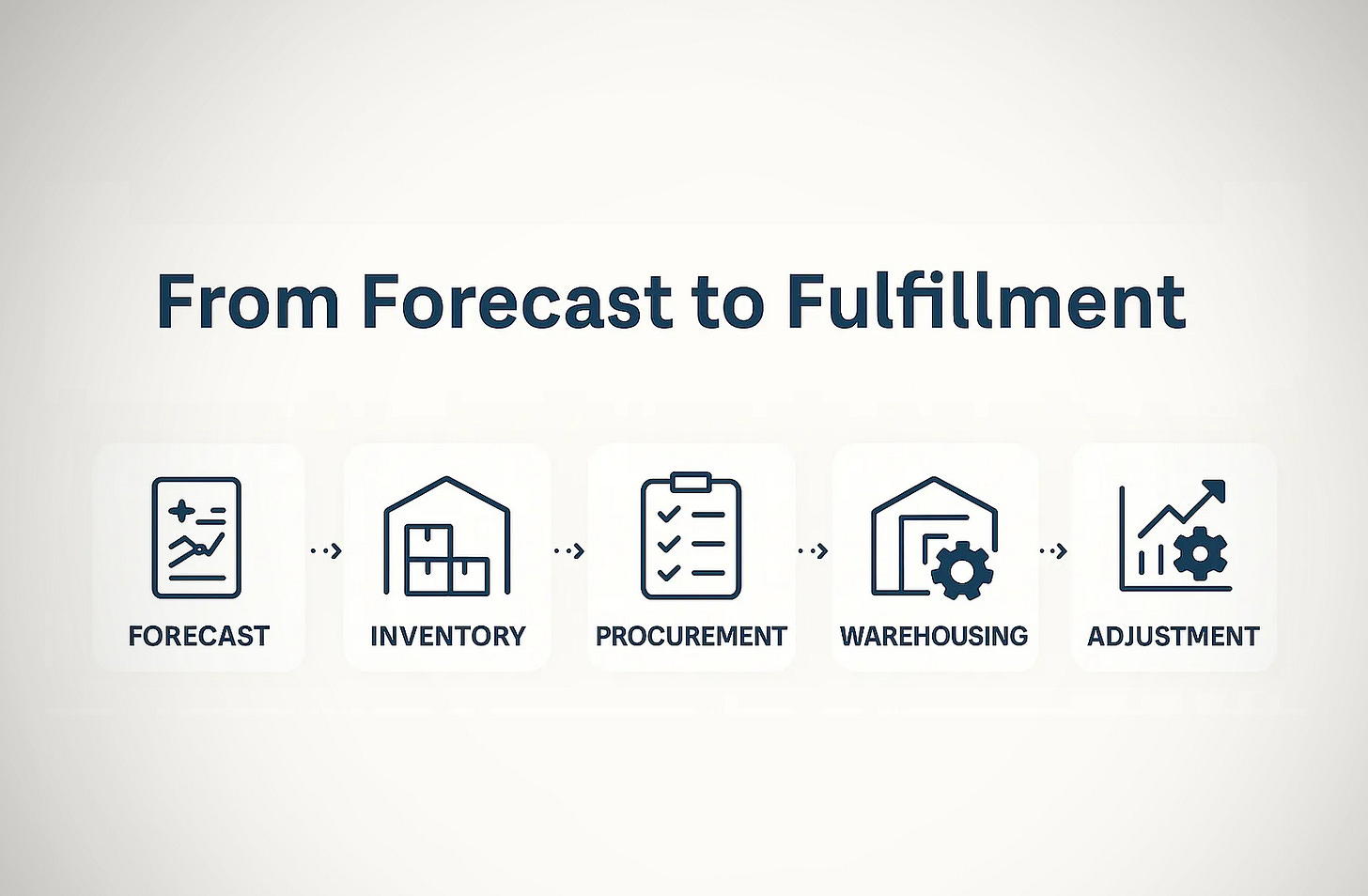From Forecast to Fulfillment
How Distributors Stay Agile in a Volatile Supply Chain
In today’s global economy, distributors face a perfect storm of challenges: volatile demand, long lead times, limited visibility, and growing customer expectations.
Whether you’re managing soft goods like apparel or hard goods like technical equipment, staying agile and proactive across your supply chain is no longer a competitive edge—it’s a survival requirement.
Here’s a high-level look at how modern distributors are adapting, and the key capabilities that are helping them navigate from forecast to fulfillment with confidence.
🔮 1. Forecasts Are the Foundation—but They’re Flawed
Every supply chain starts with a forecast. Distributors gather demand estimates from customers to plan purchases and production. But forecasts are often:
Delayed or out of sync with real demand
Inaccurate, especially for new products or promotional spikes
Difficult to act on, when they exist in disconnected formats
What best-in-class distributors do:
Centralize forecast inputs in one system
Track forecast accuracy over time
Use rolling forecasts to enable mid-cycle adjustments
📦 2. Inventory Targets Must Be Dynamic
Most distributors aim to maintain a certain buffer stock—for example, 60 days of inventory—at their domestic warehouses or 3PL partners. But demand volatility and SKU diversity make this a moving target.
Soft goods (like apparel) often come in many variants and fluctuate seasonally. Hard goods (like tools or gear) may have longer life cycles but higher cost and critical traceability requirements.
What agile distributors do:
Use demand-driven planning to align inventory to actual velocity
Monitor days-on-hand and aging stock in real time
Rebalance inventory across locations based on shifting demand
🚢 3. Procurement Must Account for Lead Time Risk
Once forecasts are in, procurement teams must decide what to order and when—often from overseas suppliers. Long lead times, port delays, and geopolitical instability add complexity.
What proactive distributors do:
Automate purchase recommendations based on forecast + safety stock
Incorporate lead-time buffers and supplier scorecards
Use in-transit tracking to update availability in real time
🏭 4. Warehouse Visibility is Critical, Especially with 3PLs
Most growing distributors rely on third-party logistics (3PL) partners for warehousing and fulfillment. Without real-time sync between internal systems and 3PLs, inventory visibility suffers—and so does customer satisfaction.
What smart distributors do:
Integrate 3PL data feeds directly into their ERP or OMS
Track inbound receipts, outbound picks, and fulfillment SLAs
Automate order allocation based on inventory availability and proximity
🧬 5. Traceability Builds Trust
For many products—especially regulated or safety-sensitive goods—batch-level traceability is essential. If a defect, return, or safety issue arises, distributors must know exactly:
Where a product came from
Where it was stored
Who received it
What compliant distributors do:
Link every product to a lot/batch number from supplier to shipment
Track returns and complaints at the SKU + lot level
Maintain full product history for audits and recall readiness
🔁 6. Agility is the Ultimate Advantage
No forecast is perfect. No year goes to plan. The distributors that win are the ones who can adapt.
Whether it’s shifting inventory across warehouses, canceling a PO, or reforecasting demand mid-cycle—agility separates the reactive from the resilient.
What resilient distributors do:
Use scenario planning tools to simulate supply chain decisions
Build workflows to course-correct quickly when data shifts
Empower cross-functional teams with shared visibility and KPIs
📈 Final Thoughts: A New Era of Distribution Requires New Tools
Distribution is no longer just about moving boxes—it’s about moving smart. With real-time data, integrated systems, and proactive planning, modern distributors can respond faster, waste less, and serve customers better.
If your supply chain still feels reactive or disjointed, it may be time to revisit how your forecasts, inventory, and fulfillment processes are connected.
The future of distribution belongs to the agile. Are you ready?


